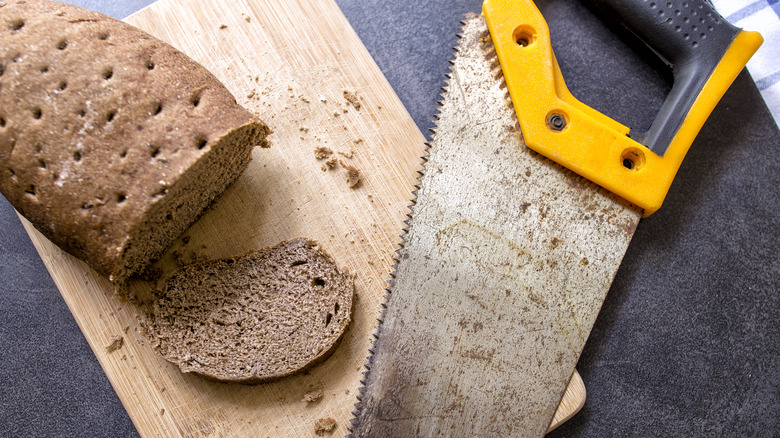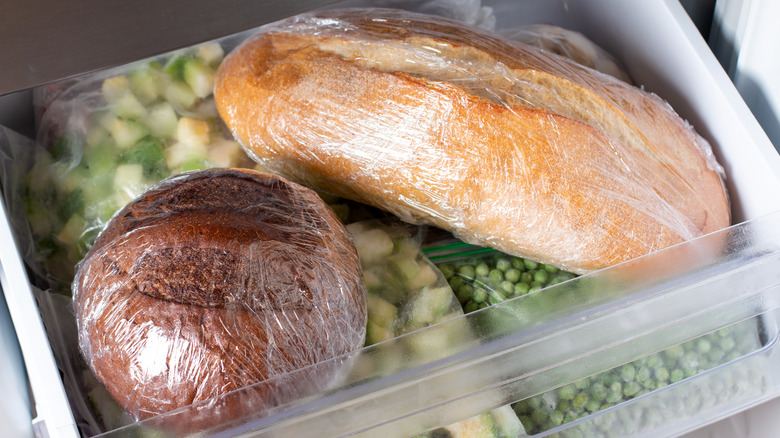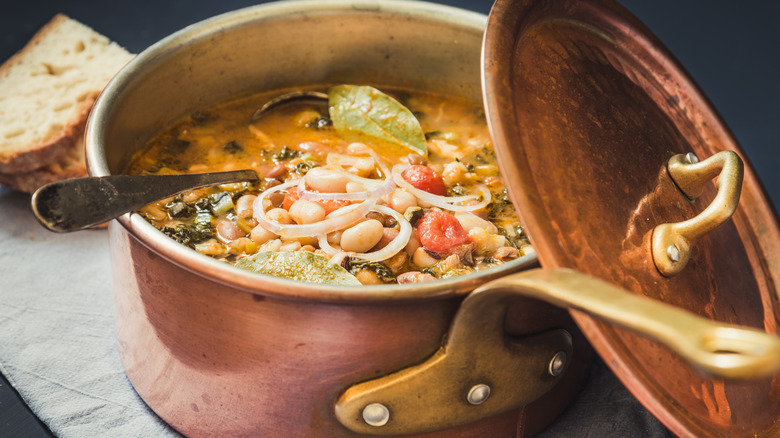Why Bread Gets Hard When It's Stale
Gluten connoisseurs are very familiar with the rollercoaster of eating fresh bread. The first day is glorious, a study in contrast between plush crumb and crackly crust. After that, it's an uphill battle to maintain the textures and stave off dryness. No matter how complex your wrapping technique or ingenious your storage spot, stale bread is just around the corner.
That's because, despite your best efforts, hard bread is the result of a scientific process beyond your control. It all comes down to starch. Starch molecules start out in a crystalline form when raw in flour, but during the baking process, their shapes change as bakers add moisture. Once out of the oven, the starch begins to recrystallize, returning to its original molecular structure, and ditching the added moisture — ultimately leaving your pillowy slices resembling crackers.
Though food scientists and manufacturers have figured out a few workarounds to delay this process, known as retrogradation, stale bread is as inevitable as death and taxes. The only thing truly capable of stalling it is your freezer. Freezing temperatures combat the issue by slowing moisture loss — but don't bother with the fridge. Counterintuitive as it might sound, the cold-but-not-freezing environment will actually speed up recrystallization, rather than halt it.
Protecting against staling
Not all bread hurdles toward staleness at the same pace. Longer fermentation times slow starch retrogradation. In other words, sourdough and other doughs that undergo an extended preparation process take longer to go stale. And enriched loaves that contain eggs or butter will also stay springy due to the extra fat protecting the crumb.
As you might guess, your location and the shape of your bake play roles in its longevity. Dry climates speed up staling, and bigger rounds can cling to moisture for slightly longer. Manufacturers are well aware of the pitfalls of this chemical process and add specific ingredients to ensure their bagged breads remain shelf-stable.
If you're hoping to nibble on your baguette or ciabatta for a day or two, you can try using a bread box or wrapping the whole thing in a plastic bag. Avoid warm or humid spots, as these can speed up spoilage. But keep in mind that most homemade and bakery bread is fully stale by day five, so if you've got more gluten than you can handle, it's worth freezing a portion, either sliced or whole, while it's still fresh.
Making the most of hard bread
If you notice your bread starting to harden after a day or two, you can try salvaging it by turning on the oven. Use the same reheating technique that revives dry bagels: dip slices into water before warming them in the oven. This softening effect doesn't last forever, though, so use the restored pieces in a sandwich or avocado toast before the magic wears off.
Once your bread reaches the point of no return, you're better off cooking with it than trying to freeze it. Low temperatures preserve the loaf at its peak, but they can't bring ancient bakes back to life. Luckily, there are plenty of great ways to use up the hard bits.
In addition to the usual suspects like croutons, stuffing, and breadcrumbs, you can put the best of the flavorful crumb to work in a deliciously hearty soup made out of stale bread called ribollita. The hardened bread thickens the Italian meal, giving it a stick-to-your-bones quality. The same trick works to enrich creamy mushroom soup as well. Try toasting torn-up scraps or rubbing them with garlic before using to imbue even more savory notes.



